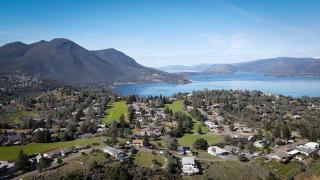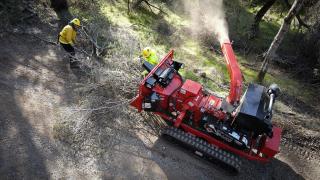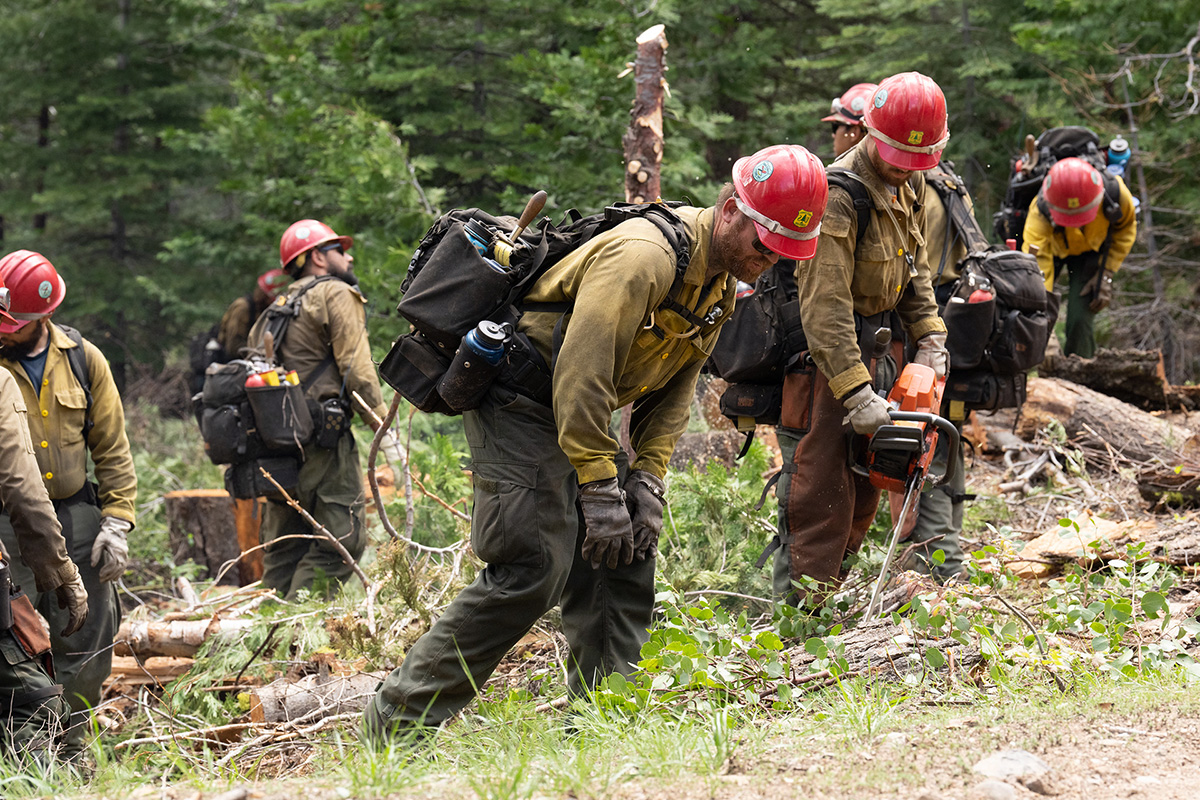The sounds of chainsaws and chippers aren’t normally associated with a sense of new life and vitality. But in Lake County, California, where the 2015 Valley Fire killed 4 people and destroyed nearly 2,000 structures, clearing overgrown brush is not only reducing the risk of wildfire, but also creating jobs and restoring hope.
“The Valley Fire made us all wake up and feel that we had to do something,” said Carolyn Ruttan, co-founder of the non-profit Clear Lake Environmental Research Center, when recalling how she became involved in wildfire mitigation work.

Ruttan spends most days in the basement of an old Carnegie Library in Lakeport, California, in her lab coat and blue nitrile gloves analyzing water samples. Since relocating to Lake County and co-founding the water quality lab, she has dedicated much of her time to monitoring California’s largest lake. But it wasn’t until 2015 that she started looking beyond the water in her pursuit to protect this cherished resource.
“We were trying to draw attention to Clear Lake, and we thought to ourselves, ‘We've got to think of the watershed,’” said Ruttan.
Clear Lake’s 526 square mile watershed spreads across Lake County, one of the poorest counties in California. With a small population and median household income of just $56,259, it can be challenging for local governments to fund fire mitigation work despite most of the county being categorized as a “high” or “very high” fire hazard zone.

A $9.8 million Community Wildfire Defense Grant from the U.S. Department of Agriculture’s Forest Service is giving Lake County a much-needed boost to reduce wildfire risk to human lives and property. With this grant, CLERC has brought together multiple rural fire protection districts to clear overgrown brush from roadsides and support a brush chipping program that assists landowners with vegetation removal from their property. The work is paying dividends.
“The Forest Service grant is showing everybody in Lake County that the federal government cares,” said Ruttan. “And when people see what a fire resilient community looks like, when they see piles of brush being removed, they might just say, ‘I can do that; I can do my part too,’” she added.
Aside from conservation, one of CLERC’s foundational principles is to hire locals and ensure every dollar stays in the county. Ruttan described how one contractor has grown their business from eight to 22 full-time workers. A crew employed by the Northshore Fire Protection District is also working, in part, on fuel reduction. All this activity is breathing new life into the rural agricultural communities of a county devastated by wildfire.

This is where Ruttan is carving out a niche, bringing together various government agencies, non-profits, local landowners and residents.
“I really do hope more youngsters get involved with the fire departments to learn vegetation management. If they find they don’t like fighting fires, then I hope they see they can form their own tree care service business, because the need to remove fuels will never go away,” Ruttan said.
And there is more work to do. The community wildfire protection plan developed for Lake County identified 145 actions needed to help reduce the threat of future wildfires. Community Wildfire Defense Grant funding will support completion of the first 17 actions, focused on removing fuels along major travel routes to create usable firebreaks and improve public egress during an emergency.

It’s not a coincidence that the first major projects are highly visible to the public. Ruttan hopes her work with CLERC, the fire protection districts and county government will serve as a constant visual reminder to others and lead more community members to ask the question, “What can I do to protect my property when the next wildfire strikes?”
The Community Wildfire Defense Program, funded by the Infrastructure Investment and Jobs Act, assists at-risk communities, including tribal communities, with planning for and lowering wildfire risks on tribal, state and privately managed land. The program comes at a time when the nation faces an ongoing wildfire crisis. These grants support the Forest Service’s plan to confront the wildfire crisis across all lands.





